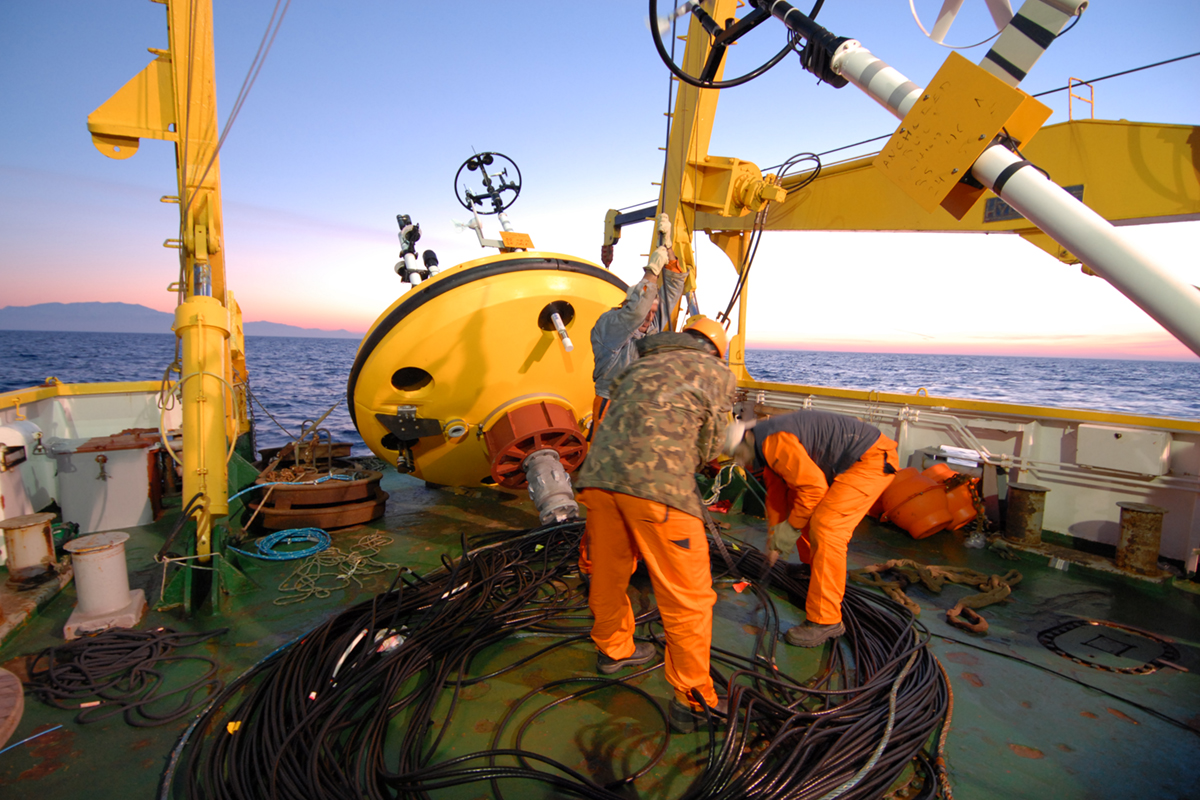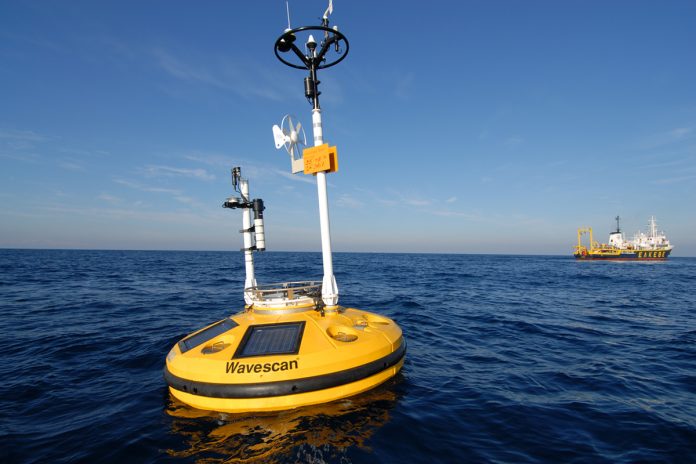Ilaria Nardello from EMBRC-ERIC (European Marine Biological Resource Centre) details the future in store for advanced marine LTER data as an excellent example of necessary environmental research
The centralisation and harmonisation of marine LTER data lie ahead with EMBRC-ERIC working to develop data and knowledge repositories, e-infrastructure and genomic observations through a data access system and an analysis and data archiving platform.
Long-term ecological research (LTER) is used to identify changes in ecological variables over a function of time to understand ecological processes and relationships (Ducklow, Doney, & Steinberg, 2009; Knapp et al., 2012; Wolfe et al., 1987). A number of marine LTER variables are measured and range from water characteristics to nutrient concentrations to the diversity of organisms. The measurements can be analysed as one variable or multiple parameters and can be compared or combined to show relationships that would otherwise be unknown, such as the environmental status of marine waters or responses of community structure to changes in the environment.
Analyses in the past have used limited long-term biological parameters to separately study biotic and abiotic interactions, meanwhile, species abundance (combined with other factors) can give insight into the causes and effects of such change (Beaugrand, Brander, Alistair Lindley, Souissi, & Reid, 2003). The nuance of aggregating data for analysis over larger spatiotemporal scales is due to the lack of coordination and standardisation in sampling, which results in spatial and temporal gaps, as well as marine stations and platforms operating at a local level (European Marine Board, 2018; Wolfe et al., 1987).
Harmonising LTER data and research infrastructures
Efforts to harmonise LTER data originate from the necessity of interoperable data for analysis, although stations and institutions in Europe use different instruments and protocols to take measurements of LTER variables. Data itself is not the only system that is heterogeneous in the LTER data field, the accessibility of such data is also variant. Datasets are found on various information systems and infrastructures and have different levels of procedures for accessibility, from the conditions of requesting specific data or clicking a link to downloading large files of LTER data. As LTER data is found in diverse locations online, the visibility of the data is reduced (Ilaria Nardello et al. 2017). In some cases, data of different variables from the same site are monitored by different organisations and, therefore, dispersed to different networks online. The same dataset may also be located in different networks and have different levels of accessibility, making it more complicated to aggregate long-term monitoring data.
Research infrastructures have formed to solve issues in research and the European Marine Biological Resource Centre (EMBRC-ERIC) has objectives to develop data and knowledge repositories, e-infrastructure, long-term monitoring efforts and genomic observations through a data access system plus an analysis and data archiving platform (Ilaria Nardello et al., 2017). With the task of establishing and operating new or existing research infrastructures, an investigation into the consortium’s long-term ecological research data capacity was conducted (S. Gras, 2018).

Findings from the research indicated that datasets are currently not FAIR ((F)ind, (A)ccess, (I)ntergrate and (R)euse) (GO FAIR Initiative). Instead of being accessible through one point, they are scattered across the World Wide Web. While there are plenty of LTER activities within EMBRC-ERIC with the numerous types of monitoring efforts, many are embedded into data products, which do not have the same ability to be manipulated nor aggregated in the way raw data does. The complexity of the data providers increases as each one is specialised in a specific region or type of data.
The consortium, the data providers and users can all benefit from centralising LTER data on the EMBRC-ERIC access portal. Developing the access portal to create an LTER data inventory, mentioned in the EMBRC-ERIC Data Management Plan will allow for seamless user experience and access (EMBRC-ERIC, 2017). Centralising data will increase the visibility of both the EMBRC stations and their data providers and create an opportunity for EMBRC-ERIC to develop a unique access point for LTER data. In doing so, LTER will be found more easily and research strategies will improve.
The future of studying biodiversity
Similarly to the data networks, the LTER activities are largely independent as are their methodologies, restricting the possibility of cross-analysis and, thus, studying biodiversity at a large scale. To advance the future of marine science, EMBRC-ERIC must advocate for developed capabilities of long-term data through standardisation or harmonisation schemes of methodology in data collection. The consortium can develop and maintain common standard quality practices (Ilaria Nardello et al., 2017), considering that on its own, “site-focused” monitoring cannot fulfil global monitoring efforts (Couvet et al., 2011). With installations of EMBRC-ERIC being in different geographic locations and, thus, having different ecosystems, they were found to specialise in varying aspects of marine biology and organisms.
Ensuring the harmonisation of methods for variables that can be collected by all stations will enable cross-analysis, as well as targeting specific variables to be standardised by stations that have similar ecosystems. EMBRC-ERIC has the potential to collaborate with other European and global infrastructures to increase its own visibility. With harmonisation, the methodology may not be identical but it can easily be accounted for in measurements and result in compatible datasets for appropriate data extrapolation (Kissling, Ahumada, et al., 2018). The harmonisation of datasets can begin with a set of specific variables and evolve to more parameters and methodologies. If applied at a larger range of biological variables, it will create better long-term ecological research and findings.
In the years to come, the international consortium can lead to improved LTER measurements. By beginning this initiative, EMBRC-ERIC can partake in the movement development necessary to further research and understanding of our environment through scientific breakthroughs.
References:
Beaugrand, G., Brander, K. M., Alistair Lindley, J., Souissi, S., & Reid, P. C. (2003). Plankton effect on cod recruitment in the North Sea. Nature, 426(6967), 661–664. https://doi.org/10.1038/nature02164
Couvet, D., Devictor, V., Jiguet, F., & Julliard, R. (2011). Scientific contributions of extensive biodiversity monitoring. Comptes Rendus Biologies, 334(5–6), 370–377. https://doi.org/10.1016/J.CRVI.2011.02.007
Ducklow, H. W., Doney, S. C., & Steinberg, D. K. (2009). Contributions of Long-Term Research and Time-Series Observations to Marine Ecology and Biogeochemistry. Annual Review of Marine Science, 1(1), 279–302. https://doi.org/10.1146/annurev.marine.010908.163801
EMBRC-ERIC. (2017). EMBRC-ERIC Data Management Plan. Retrieved from http://www.embrc.eu/sites/embrc.eu/files/public/EMBRC_data_management_plan.pdf
European Marine Board. (2018). Strengthening Europe’s Capability in Biological Ocean Observations Future Science Brief Strengthening Europe’s Capability in Biological Ocean Observations. Retrieved from www.marineboard.eu
Gras, S. (2018). EMBRC-ERIC capabilities for long-term ecological research – a test case from benthic ecosystems of the Baltic Sea. Northeastern University
Kissling, W. D., Ahumada, J. A., Bowser, A., Fernandez, M., Fernández, N., García, E. A., … Hardisty, A. R. (2018). Building essential biodiversity variables (EBVs) of species distribution and abundance at a global scale. Biological Reviews, 93(1), 600–625. https://doi.org/10.1111/brv.12359
Knapp, A. K., Smith, M. D., Hobbie, S. E., Collins, S. L., Fahey, T. J., Hansen, G. J. A., … Webster, J. R. (2012). Past, Present, and Future Roles of Long-Term Experiments in the LTER Network. BioScience, 62(4), 377–389. https://doi.org/10.1525/bio.2012.62.4.9
Nardello, I., Villanueva, A., Kloareg, B., Kooistra, W. H. C. F., Borra, M., Salvaudon, L., … Merciecca, M. (2017). EMBRC-ERIC Business Plan. Paris. Retrieved from http://www.embrc.eu/sites/embrc.eu/files/public/EMBRC_Business_Plan.pdf
The Council of the European Union. (2009). Council Regulation (EC) No 723/2009 of 25 June 2009 on the Community legal framework for a European Research Infrastructure Consortium (ERIC). Official Journal of the European Union. Retrieved from https://eur-lex.europa.eu/legal-content/EN/TXT/PDF/?uri=CELEX:32009R0723&from=EN
Wolfe, D. A., Champ, M. A., Flemer, D. A., & Mearns, A. J. (1987). Long-Term Biological Data Sets: Their Role in Research, Monitoring, and Management of Estuarine and Coastal Marine Systems. Estuaries, 10(3), 181. https://doi.org/10.2307/1351847
Please note: this is a commercial profile
Ilaria Nardello
Executive Director
Sidonie Gras
Scientific Officer
EMBRC-ERIC (European Marine Biological Resource Centre)
Tel: +33 1 44 27 63 37
info@embrc.eu











